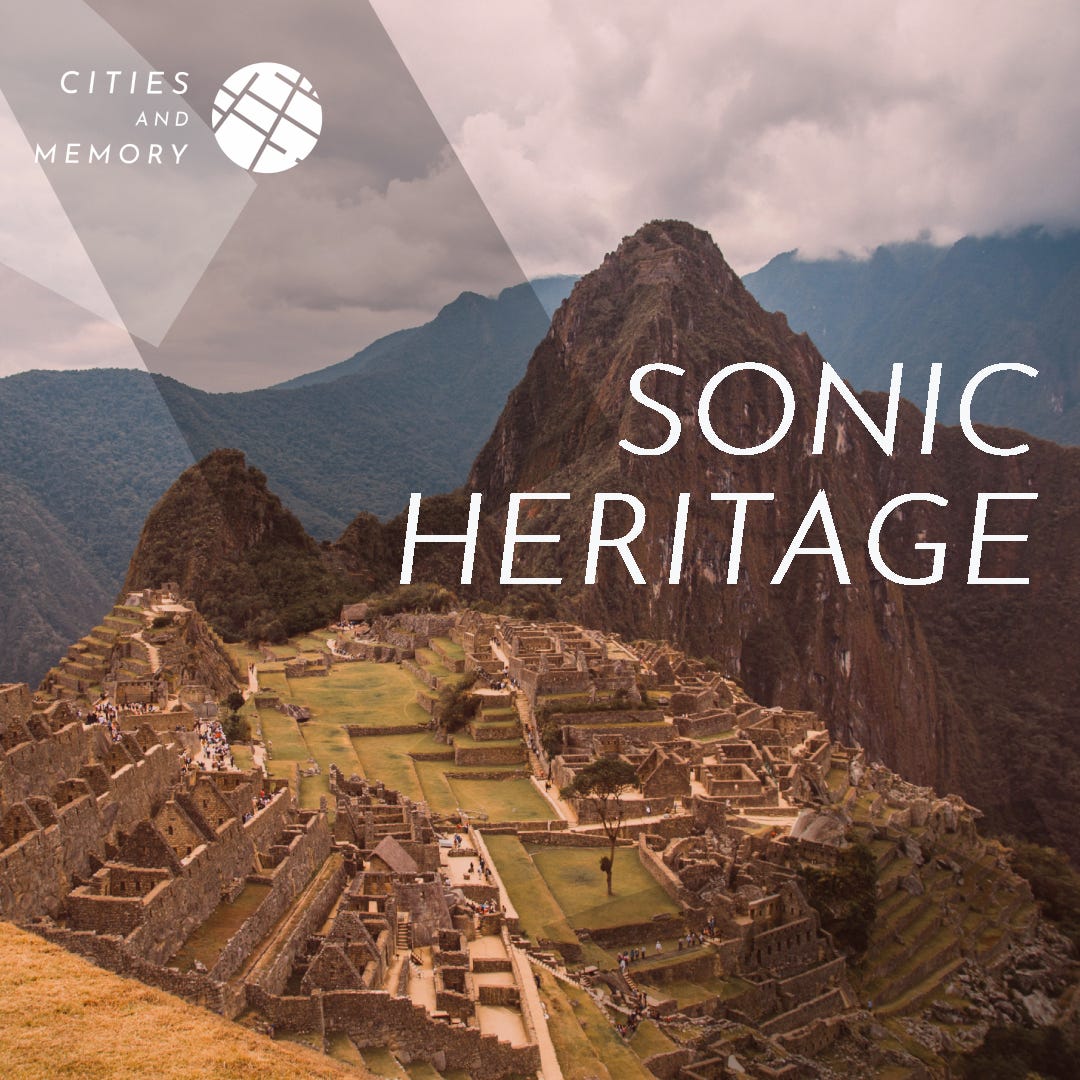Open call - join our new global project Sonic Heritage
Get involved by submitting a recording or signing up as an artist!
Hi everyone
We’re delighted to announce our next major project for the coming months - Sonic Heritage - and we’re looking for recordings and artists to take part.
The project will explore the sounds of the world’s most famous sights, asking questions around tourism, identity and preservation such as:
What are the characteristic sounds of the most culturally-significant spaces on Earth – and what can be done to preserve culturally-significant sounds before they disappear forever?
What does something that is instantly iconic as an image to us all sound like when you’re there?
Are the soundscapes of iconic Heritage sites such as Machu Picchu, the Great Barrier Reef, Mount Fuji or the Colosseum worth preserving in their own right?
Sounds from UNESCO World Heritage sites, and representing all forms of intangible heritage, will be collected and reimagined by artists from all over the world, creating a unique collection of compositions using sound to reflect on tourism, heritage and culture.
The project will launch on World Heritage Day 2025 (18 April).
How can I get involved?
There are two phases to the project, both of which are open to anyone to take part:
1. Recordings of World Heritage sites or intangible heritage
We’re looking for field recordings either from existing UNESCO World Heritage sites, or representing items of Intangible Heritage, as defined by UNESCO, like flamenco, falconry, alpinism, baguette-making or Arabic coffee:
You can find a full list of 1,223 World Heritage sites here (or on Wikipedia): https://whc.unesco.org/en/list/
There is a database of 730 Intangible Heritage items – from traditional song to handicraft practices – here (or on Wikipedia): https://ich.unesco.org/en/lists
The callout for recordings runs until December 31, 2024 and you can submit a recording here: https://bit.ly/heritagerecording
Recordings from any World Heritage site in the world, or any item on the Intangible Heritage list are eligible.
We will need the following for each recording:
A WAV file between 1 and 20 minutes in length.
The precise location of the recording (latitude/longitude)
A title for your recording – this can either be descriptive or more imaginative (up to you!)
A description of the recording – which site is it, what can we hear in the recording, what should we know about this particular recording, and any personal reflections you have either on the sound or the space itself (or both).
Optionally, a photograph of the recording location would be great too if you have one, though this is not mandatory.
2. Reimagining World Heritage – callout for artists
These recordings will then be offered up to artists as source material for brand new compositions reflecting on the themes of the project.
Artists will choose a field recording of a site or intangible heritage practice that speaks to them and, using that as a basis, will create a composition reflecting their own thoughts and feelings about the issues raised by Sonic Heritage.
The callout for artists will take place in January, but if you’d like to take part, you can join the artist waitlist and we will contact you as soon as the call opens.
Join the artist waitlist
Artists will have two months to create their compositions, with submissions due in late March 2025.
Why sonic heritage?
Sound is usually the poor relation when it comes to tourism – in our visually-dominated culture, everything seems to be about where you take the Instagram photo or the video clip for TikTok.
As overtourism becomes a crisis for many cities around the world and Insta-tourism increases the pressure on tourist destinations and the focus on how things look, sound can help us to throw new light on these issues and how we might address them.
Rarely does sound enter the equation when we think about tourism or what makes a place great – and this holds true for preservation too. There are no “blue plaque” schemes marking out sonic sites of interest, and even UNESCO’s Intangible Heritage lists serve sound poorly.
In our view, this needs to change – so in this project we take a sonic tour to examine the role sound plays in these spaces deemed to be the world’s most culturally significant.
We consider how sound affects our experience of new cultures and tourism, and why sound often assumes lesser importance when it comes to recognising and celebrating heritage.
Sonic Heritage aims to address these fundamental questions:
What role does sound have to play in enriching our experience of the world’s most incredible places?
What are the soundscapes that accompany the world’s most culturally-important sites and spaces?
How should we identify, celebrate and preserve soundscapes around the world that are culturally or socially significant – before it’s too late?
We hope you’ll find the new project callout interesting, and hope you can get involved, either by sending a heritage recording before the end of 2024, or by signing up as an artist.
As always, thank you for listening,
Stuart.







